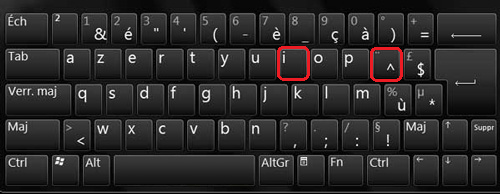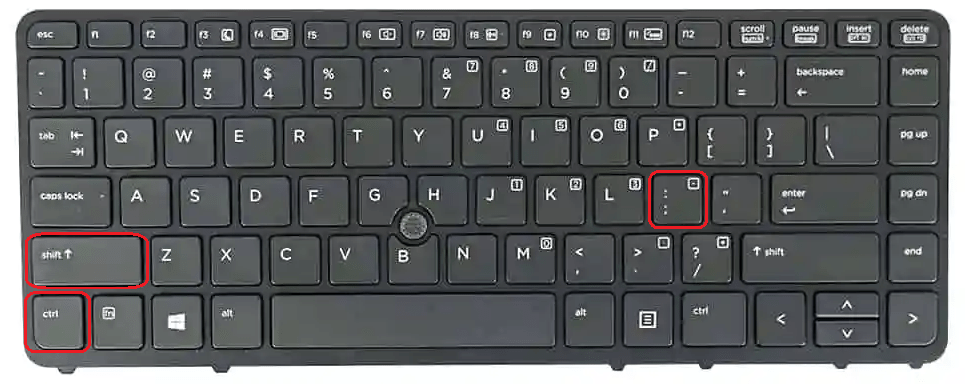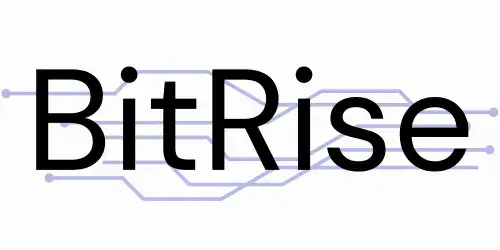
ï tréma is a letter that is part of the French alphabet and is pronounced like i. It is used to show that the i is not part of a vowel group, but is pronounced separately. For example, in the word naif, ï tréma indicates that the i is pronounced after the a and not with it.
But how do you type an ï umlaut on the keyboard? It depends on the type of keyboard you’re using, your computer’s operating system, and the software you’re typing on. Here are some methods to help you write an ïumlaut easily.

How to make a lowercase ï umlaut in AZERTY keyboard?
If you are using an AZERTY keyboard, i.e. a standard French keyboard, there are several ways to do an ï umlaut:
1. The simplest method is to use the ^ key located to the right of the P key.

Just press this key and then the I key to get an umlaut. For example, to write naive, type N then A then ^ then I then F.
2. use Alt Gr + I key combination.

Alt Gr is the key to the right of the space bar. You have to hold down this key and then press the I key to get an umlaut. For example, to write hat, type H then A then Alt Gr + I then R. But what if the Alt Gr key no longer works on your keyboard? There are several solutions to solve this problem, such as checking your keyboard settings, disabling stuck keys, or reinstalling the keyboard driver. I
3. Use the ASCII code for umlaut.
The ASCII code is a numeric code that corresponds to each character on the keyboard. To type an ï umlaut with the ASCII code, you need to hold down the Alt key and then type the code 139 in the number pad located to the right of the keyboard. For example, to spell corn, type M, then A, then Alt + 139, then S.
How to make a capital ï umlaut in AZERTY keyboard?
To make the capital i umlaut (Ï), there are also two possible methods
- The first is to press the keys at the same time ↑ Shift + ^then release and press the button I.
- The second consists of pressing the keys in succession Alt 0 2 0 7.
How to do an ï umlaut on QWERTY keyboard?
If you are using a QWERTY keyboard, i.e. an English or American keyboard, there are also several ways to do an umlaut:
1. The simplest method is to use the ” key to the right of the ? key.

Just press this key and then the I key to get an umlaut. For example, to write naive, type N, then A, then “, then I, then F.
2. The key combination Alt + 0239.
Alt is the key to the left of the spacebar. You need to hold down this key and then type the code 0239 in the number pad located to the right of the keyboard. For example, to write hat, type H, then Alt + 0239, then R.
3. The keyboard shortcut Ctrl + Shift +: then I.

Ctrl and Shift are the keys located at the bottom left of the keyboard. You need to hold down these two keys and then press the : key which is to the right of the L key. Then you need to release the keys and press the I key to get an umlaut. For example, to write corn, type M then A then Ctrl + Shift + : then I then S.
How to make an umlaut on Mac?
If you’re using a Mac computer, there are also several ways to do an umlaut:
The easiest method is to use Option key + U and then I.
Option is the key to the left of the space bar. You have to press this key and then the U key to get distinction. Then you have to release the keys and press the I key to get an umlaut. For example, to type naive, type Option + U, then I, then A, then F.
Another method is to use the virtual keyboard.
Virtual Keyboard is a tool that allows you to display the on-screen keyboard and click keys with the mouse. To enable the virtual keyboard, go to the Apple menu, then System Preferences, then Keyboard, then check the Show keyboard viewers and Emoji in the menu bar box. Then click on the keyboard icon that appears in the menu bar and select Show Keyboard View. Then the virtual keyboard appears on the screen and all you have to do is click the Option + U key and then the I key to get an umlaut.
A third method is to use the character picker.
Character Chooser is a tool that provides access to all the special characters available on the Mac. To enable the character picker, go to the Apple menu, then System Preferences, then Keyboard, then check the Show keyboard and emoji projectors in the menu bar box. Then click on the keyboard icon that appears in the menu bar and select Show Character Picker. The character picker then appears on the screen and all you have to do is look for the umlaut in the list of characters and drag and drop it into the text.
How to make an umlaut in Word?
If you use Word software to write your texts, there are also several ways to do an umlaut:
The easiest method is to use the Symbol tool.

The Symbol tool is located on the Insert tab of the ribbon. Just click on this tool and then select Other Symbols from the drop-down menu. Then a window opens with a list of available symbols. You need to look for the ïumlaut in this list and click on it to insert it into the text.
Another method is to use the Equation tool.
The Equation tool is also found on the Insert tab of the ribbon. Just click on this tool and then select New Equation from the drop-down menu. Then an equation box appears in the text and you have to type \ddot{i} to get an umlaut. You must then click outside the equation area to return to normal mode.
A third method is to use keyboard shortcuts specific to Word.
There are indeed key combinations that allow you to directly insert special Windows characters into Word. To type an ï umlaut with keyboard shortcuts, you need to hold down the Ctrl key, then press the key: then release the keys and press the I key. For example, to write naive, type Ctrl +: then I, then A, then F.
What is the difference between a circumflex i and an umlaut i?
A rolled i accent (^) indicates that the i is pronounced like è or é. It is used to mark the absence of a letter that disappeared during the evolution of the language. For example, in the word island, the circumflex i indicates that there was once an s (isla in Latin). An i umlaut (¨) indicates that i is pronounced like i. It is used to separate i from another vowel sound. For example, in the word naive, i tréma indicates that the i is pronounced after the a and not with it.
How to do a breakdown on a smartphone or tablet?
To do a breakdown on a smartphone or tablet, you need to use the touch keyboard that appears on the screen. Just press and hold the I key to bring up a menu of the various variations of i. Then you have to slide your finger towards the umlaut to select it and release it to insert it into the text.
What are the French words that contain an ï umlaut?
There are several French words that contain an ï umlaut. Here are some examples: aïoli, aïoli, ambroisïe, anaïs, bayonet, caïd, caïeu, caïman, coincide, coitus, coincidence, coincide, coiter, craïne, croaïseur, daïmio, daïdain, hate, disdaindain dismis , hate, hater, Haitians, Haitian , Haitian, Hawaiian, Hawaiian, Hawaiian, Hawaiian, Maïa, Maïeutique, master, mistress, master, master, born, birth, naïve, naïve, naivety, Christmas, Noëlle, onion, pasture, peace , peacock, peacock, peacock, peacock , raïs, raïssa, saiga, saül, taël
What is the origin of umlaut?
The ï umlaut is a distinctive sign that comes from ancient Greek. The word umlaut means “hole” in Greek and refers to the two dots placed over a vowel to show that it is pronounced separately from another vowel. Diaeresis was introduced into the Latin alphabet in the Middle Ages to transcribe Greek or Latin words that had distinct vowel sounds. For example, the word zoology comes from the Greek zôion (animal) and logos (speech) and was originally written zoölogie with an umlaut on the o to show that it was pronounced after the z and not with it.
What is the spelling rule for ï umlaut?
The rule for spelling ï umlaut is to use it when there are two vowels following each other and the first is an e or an a and the second is an i. Diaeresis is then used to show that the i is pronounced separately from the first vowel rather than with it. For example, in the word haiir, the distinction on the i indicates that it is pronounced after the a and not with it. There are some exceptions to this rule such as the words onion and peacock which are written without umlaut although they respect the term.
